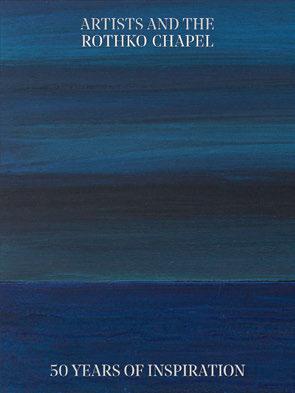
4 minute read
BOOKS
William Morris edited by Anna Mason New York: Thames & Hudson, $75 432 pages, 600 color illustrations
There have been, deservedly, many books about the multitalented English designer/craftsman William Morris (1834-1896). This one, honoring the 125th anniversary of his death, is the most comprehensive and, as designed by Ocky Murray, among the most handsome. It envelops and expands on a book by the same editor, Anna Mason, that celebrated the 100th anniversary. Mason is the former curator of the William Morris Gallery in London and has been active in the National Trust’s caretaking of Red House, Morris’s London home in the 1860's, which he designed with architect Philip Webb. She has also written about Morris’s daughter May. Chapters by a wide range of experts focus on Morris’s interior design, painting, furniture, stained glass, tiles, tableware, wallpaper, and textiles. Others examine him as a designer, writer, businessman, conservationist (founding the Society for the Protection of Ancient Buildings in 1877), and political activist (for eradicating class distinctions and protecting the natural environment). There is also a chapter about the Kelmscott Press, which he founded in 1891 and where he designed every book—including a volume of his own poetry—using fonts of his own creation. New to this revised edition is a detailed chronology of Morris’s life and accomplishments. The bibliography has been expanded to more than 400 works, including some online resources, and the index to more than 1,800 entries.
Such a polymath career is hard to summarize, but in all his works at a time of quickly increasing industrialization Morris consistently personified respect for the human touch. The last words of the book quote from his 1894 address to Birmingham art students, two years before his death, praising “the pleasure of creating beautiful things, which is the greatest pleasure in the world.” In our June issue we reviewed a book celebrating the 50th anniversary of the Rothko Chapel in Houston. Here's another celebration of the chapel but as seen by artists—some well-known, some not—whose own work has been influenced by it. Their reactions to Rothko’s paintings and the octagonal chapel renew our sense of the installation’s great significance.
One focus is on an exhibition held earlier this year at Houston's Rice University featuring pieces by textile artist Sheila Hicks and painters Sam Gilliam, Shirazeh Houshiary, and Byron Kim. There are also interviews with Brice Marden and David Novros from the 1975 exhibitionMarden, Novros, Rothko,also at Rice. Then there are brief essays by 15 other artists and friends of the chapel, including François de Menil, son of John and Dominique de Menil, without whose vision and support the Rothko Chapel would not exist. As in the earlier book there is a foreword by Christopher Rothko, the painter’s son, who is on the chapel’s board of directors. No book can match a personal visit to the site, but by letting us see it through the eyes of others, this publication takes us almost there.
Artists and the Rothko Chapel: 50 Years of Inspiration edited by Frauke V. Josenhans Houston: Moody Center for the Arts, Rice University, $25 160 pages, 114 illustrations (96 color)
What They’ re Reading...
The Power of Now: A Guide to Spiritual Enlightenment by Eckhart Tolle San Francisco: New World Library, $17 236 pages
Tomás Vera
Cofounder and creative director of Verdi
"At my sister’s recommendation, this book ended up in my hands during the pandemic. What appealed to me was mostly its subject and what I was going through in my life— it was lockdown, and I finally had some time for myself. Eckhart Tolle’s premise is basically how to dedicate time to the present and not dwell constantly on the past and future. Seems like pretty basic advice, but it’s amazing how about 90 percent of the people I know fall into this predicament. One of the most valuable lessons I learned from the book is how to separate myself from my work by understanding that my job does not define me as a person and that dedicating time to my personal life is as (or even more) important. It seems logical, but when you're trying to achieve ambitious goals in your career, your work may consume you, and that was happening to me. The other valuable lesson I learned is that the creative process flows only at a time of presence, therefore one can assume that the more present you are, the more creation will take place. This mindset has greatly reduced my anxiety and stress and has also brought back the fun in my creative work! For instance, we recently completed our AES collection, which is composed of contemporary yet artisanal rugs that combine solid bronze bars with natural fibers— an unusual and unexpected concept that arose during the lockdown, as I was reading The Power of Now.”











